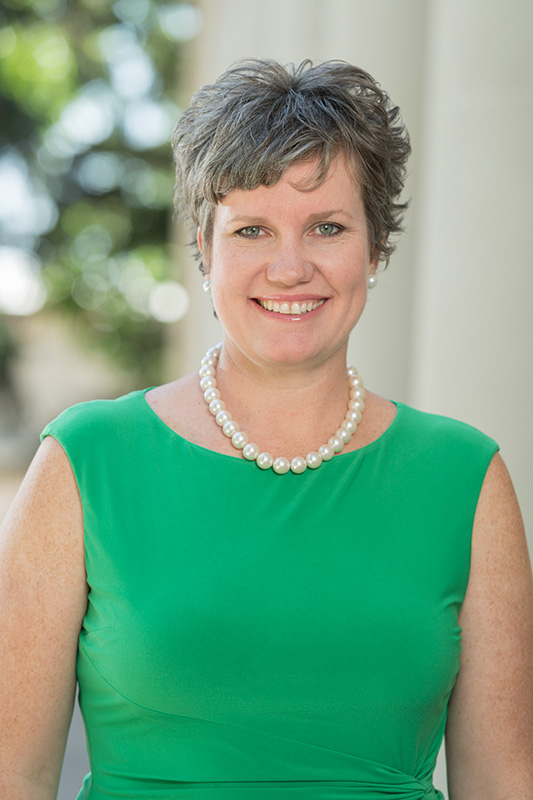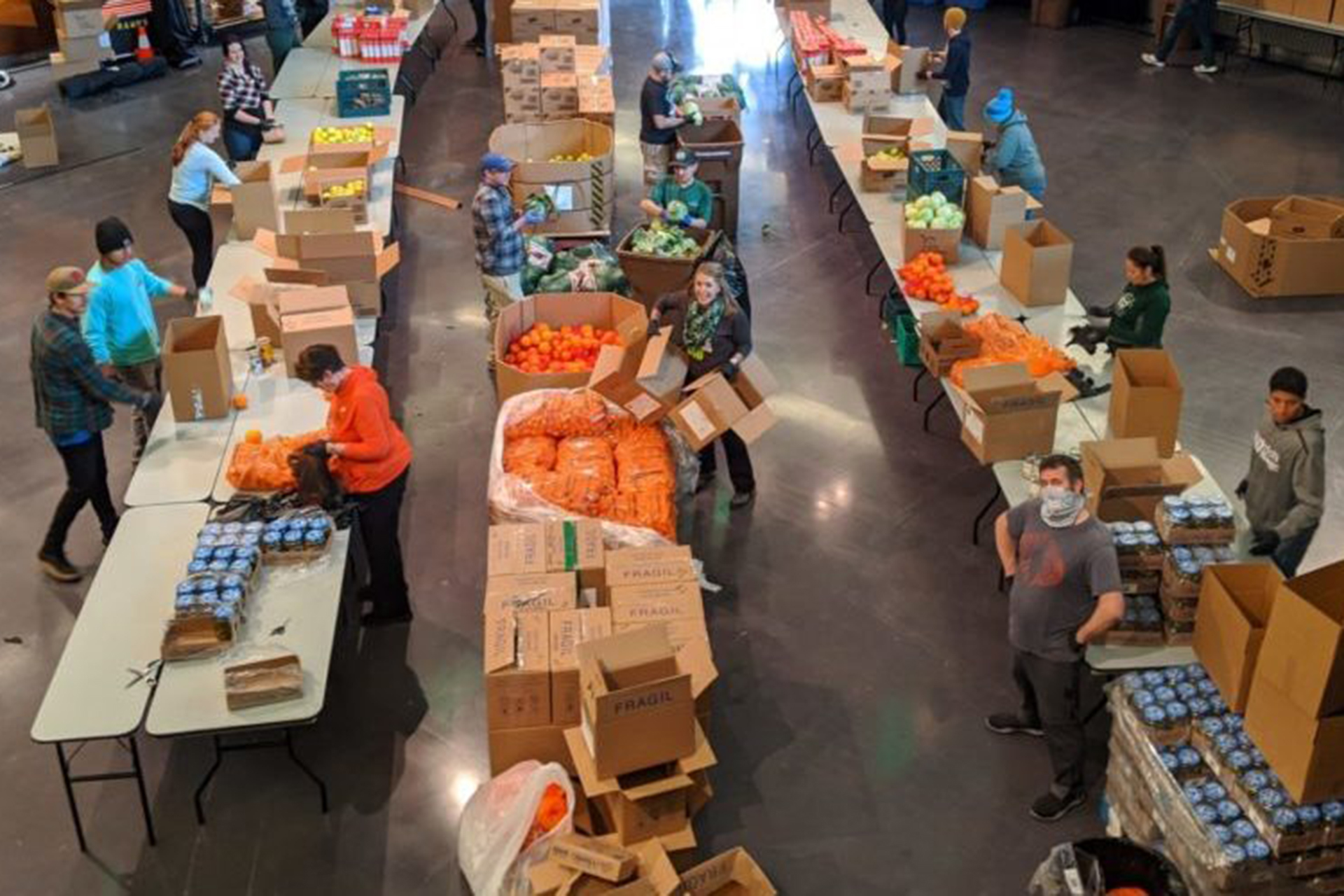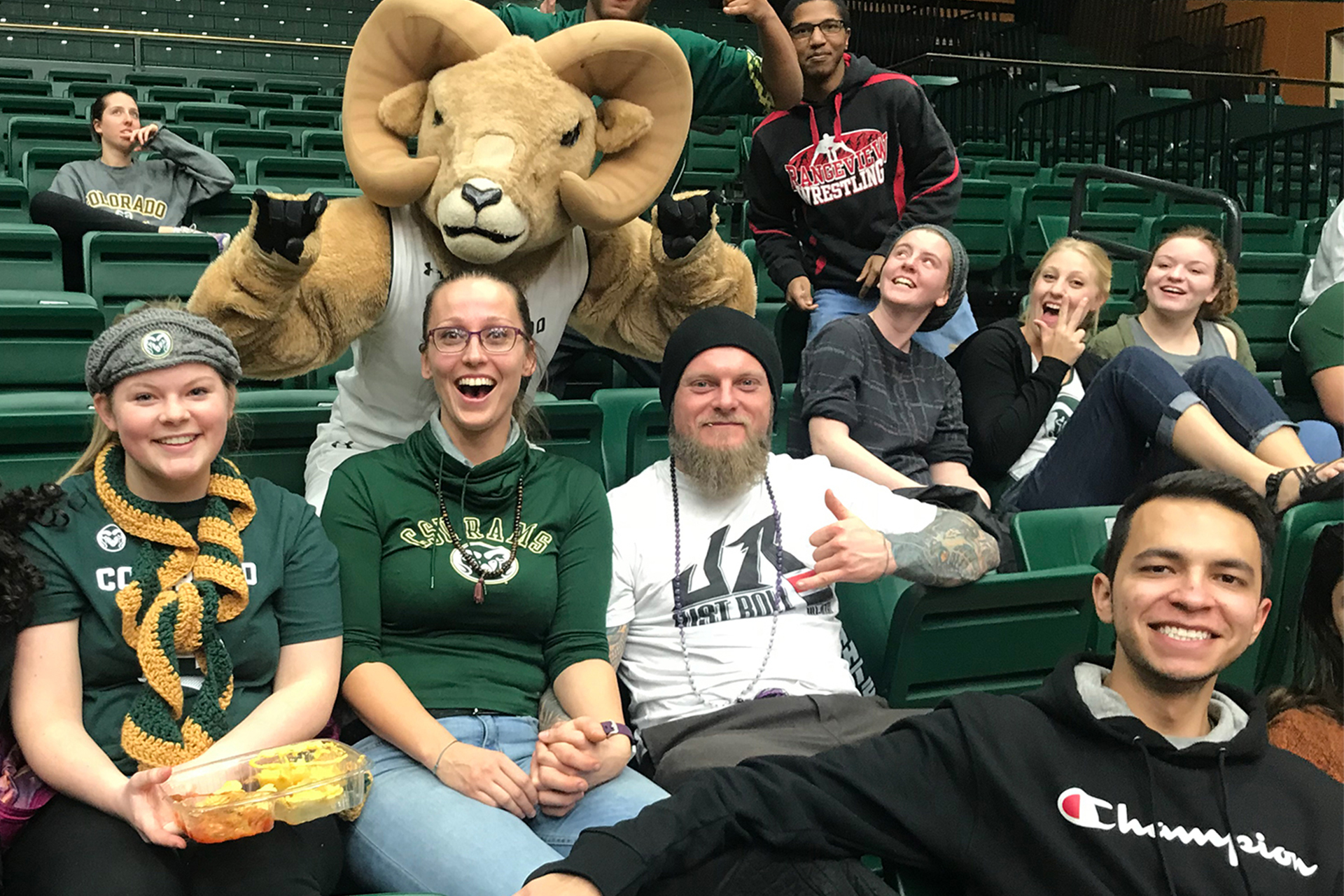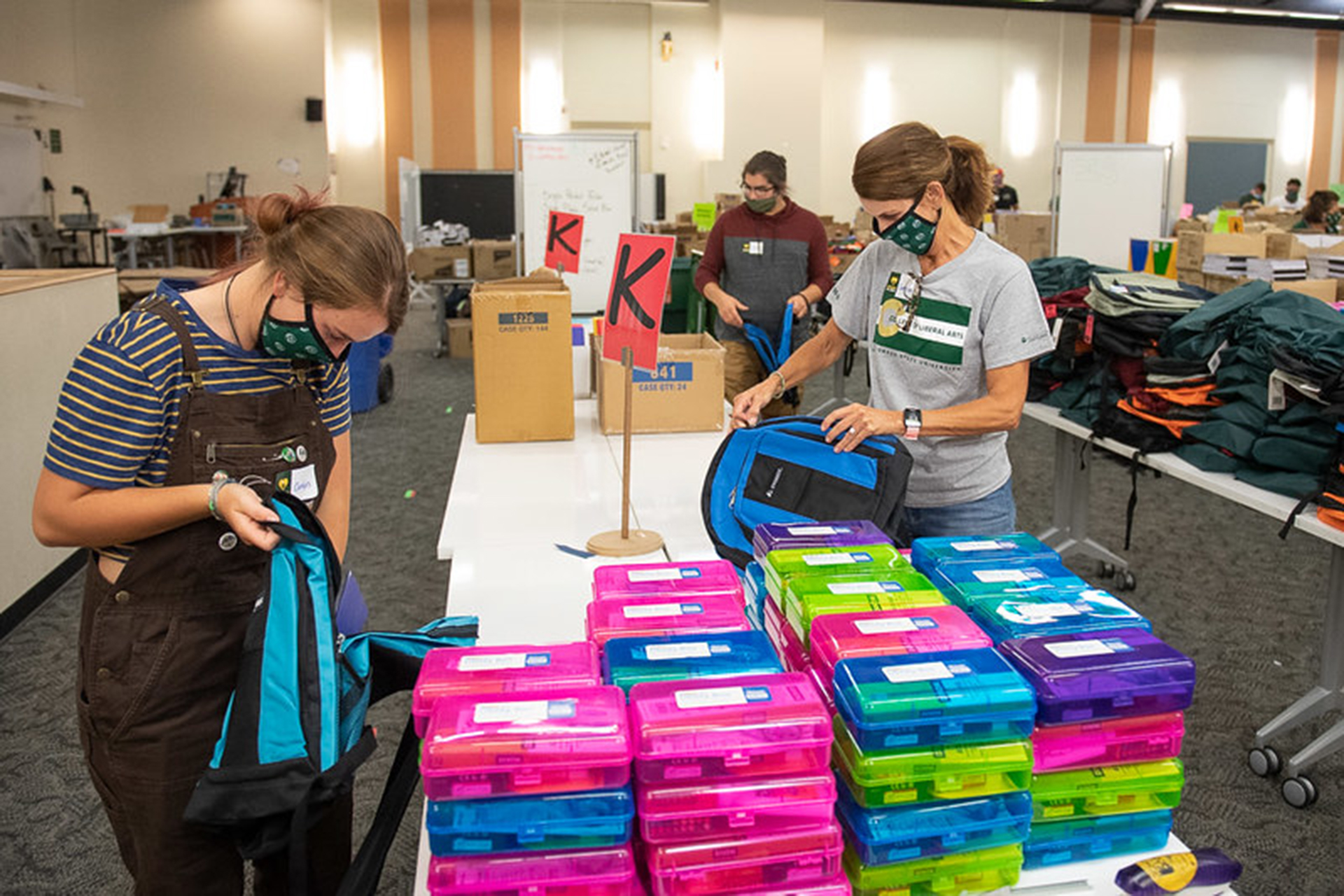We’ve all been there.
We’ve thought to ourselves that a certain cause was worthy of our financial support, but we never quite got around to making a donation. Sometimes, we might assume someone else provided the necessary resources. Other times, perhaps even when we do make a gift, we may think the amount is too insignificant to make a difference, never understanding the full power of our collective actions in improving the lives of others.
Throughout my career in fundraising, I’ve been fortunate to experience the remarkable impact committed donors can make and to be inspired by leaders and mentors who regularly supported causes and initiatives that meant the most to them. I think of donors like Brett Anderson, whose generosity sparked unprecedented transformation at CSU and continues to support students’ academic and athletic pursuits in immeasurable ways. And I often look to the stalwart example of Dr. Ann Gill, whose quiet and consistent giving has helped our students and faculty grow and become the best versions of themselves so that they can, in turn, improve the lives of others.
This February, we celebrate the generosity of our faculty and staff donors, whose support for priorities as diverse as our campus community itself sustains our mission and infuses CSU with vibrancy and hope. Philanthropy begins in the heart, and those who choose to act demonstrate a love for humankind that is unmatched. In giving to CSU, our faculty and staff donors invest in the future of not only our community, but also those throughout the world where our alumni, researchers and scholars will leave their mark.

Kim Tobin, Ph.D. (’18), CFRE, is vice president for University Advancement.
“Philanthropy begins in the heart, and those who choose to act demonstrate a love for humankind that is unmatched.”
— Kim Tobin, vice president for University Advancement
To highlight and celebrate this generosity, our University Advancement team talked with faculty and staff – our colleagues – about why giving back matters to them. The experiences, reasons, and passions that animate their philanthropy are as varied as the areas they support.
Helping students


Rams Against Hunger (left) was set up to help students who struggle with food insecurity; and the Fostering Success Program (right) is a donor-supported initiative that has helped students from foster care and independent backgrounds navigate CSU.
The importance of sustaining our students cannot be overstated, and that’s why funds such as Rams Against Hunger, Ram Aid, cultural programming, scholarships, and hundreds of others were established.
“I think COVID really brought home the needs of students,” said Dan Alverez, a master instructor in the philosophy department. “For example, seeing international students stranded in airports who weren’t able to get home, and they needed money for food and basic necessities.”
“I first learned about the Fostering Success program through the alumni magazine,” said Doreen Beard, director of operations and engagement, Avenir Museum of Design and Merchandising. “I actually cut out the little article when the program was first announced (in 2010), and thought, ‘Sometime when I’m able, that’s what I want to give to.’” That day came in 2014 when she started donating monthly through payroll deductions when she was hired by CSU.
Professor Roe Bubar, interim vice president for diversity, was a first-generation student who worked her way through an undergraduate and law degree. She experienced firsthand the benefits of programs that support students. “I’ve been committed to student success,” she said. “This academic year, I’ve donated to the Native American Cultural Center, the Black/African American Cultural Center to support programs for Black History Month, and also to the Pride Center to support our LGBT2SQ students at CSU.”
Bubar believes it’s been particularly important to donate to student cultural centers, which can support students in more holistic ways, particularly when students face unique challenges, such as the ones posed by the pandemic and the associated economic hardships.
A similar passion for students guides Timalyn O’Neill, senior associate director of processing and client services in the Office of Admissions.
“The two funds I predominately give to are Rams Against Hunger and the Fostering Success program. Both programs profoundly identify us as being ‘Ramily’ and underscore the importance of Rams taking care of Rams,” she said. “Those funds are most meaningful to me because they really are helping students with the most basic needs for food and shelter. CSU has such a strong reputation in those areas that for me there is a pride point, too, and I like making a difference.”
“I worry about the wellbeing of students,” said Dr. Ann Gill, former dean of the College of Liberal Arts, who now volunteers for the Alumni Association. “If I can do something to help in a time that’s difficult, I need to do that. It’s all about the people.” Of her nearly 36-year career at CSU, she says, “the students left footprints on my heart.”
Helping our community
Numerous funds on campus benefit our local and regional communities. The resources provided by CSU Libraries are accessible to citizens statewide, campus museums are open to the public, and other funds, such as School is Cool, provide backpacks and school supplies to primary and secondary students throughout the district.
“I like that Colorado State helps out in the community, and School is Cool is a good example,” says Alverez, who along with his two brothers, was raised by a single parent. The struggle of not having basic school supplies was a reality for him. “I know there were people way back then who helped, and now I get to help in the same way.”
“I always try to do something for School is Cool, it’s a great program,” Beard said. “Also, I like to give to the Linda L. Carlson Acquisitions fund for the Avenir Museum. It’s important for me because if I’m speaking with donors about making a commitment in their giving, I first have to demonstrate my own commitment.”
“Growing up I was taught that you’re standing on someone else’s shoulders,” Beard said. “I also give to the university my daughter attended because I’m grateful for the experiences that they made possible for her.”

School is Cool is a community outreach effort managed and organized by CSU employees that provides backpacks and school supplies to K-12 students in Fort Collins, Wellington, Timnath and LaPorte, and to outlying mountain schools.
O’Neill echoed a similar sentiment when addressing why giving is important. “Giving back is a way of being invested in your career, a kind of professional development, and it honors the people who helped you at those younger stages in your career or education.”
Helping each other
Years like the one we’ve just been through highlight harsh realities right here at home. Funds, such as CSU Cares, were designed to address the hardship of natural and civil disasters impacting our own community.
“Sooner or later,” Beard said, “something comes along that really decks you, and if it hasn’t yet, it’s coming. When you get through some of those things – and you certainly don’t get through them alone – you realize there’s no way to pay back the assistance you received. You now have that obligation – but also the privilege – to pay it forward should that become possible for you someday.”
For Gill, giving is a natural response to a life intertwined with CSU. “If you believe in the place, which I do with all my heart, and if you care about the people, which I also do with all my heart, then anything you can do to make programs better, to sustain programs that are already wonderful, or to help students get the education and have life-altering experiences, is important. It’s worthy of my treasure and my encouragement.”
There’s no time like the present
“The motivation for me is just old fashion caring,” said Alverez. “Caring for the people around you and recognizing that there’s something I can do, even if the contribution is small. It’s the idea that if I can do just a little part, and there’s enough people doing that, we can make a difference.”
The first gift O’Neill made was during a campuswide campaign in 2012 to increase faculty and staff giving. She remembers hearing that the percentage of participation was more important than the dollars raised because of the confidence it demonstrates in the institution, and the positive impression it makes on donors and other outside entities looking to invest in CSU.
“It really struck me,” she said, “that the smallest contribution is still part of that overall percentage. There was something about that approach that felt less intimidating like every single person can make a difference.”
“It really struck me that the smallest contribution is still part of that overall percentage. There was something about that approach that felt less intimidating like every single person can make a difference.”
— Timalyn O’Neill, senior associate director of processing and client services in the Office of Admissions
Beard, who started giving in 1988, spoke to starting with smaller gifts, too. “My first gifts were certainly not big, but I loved the history department and the fabulous teaching faculty. I wanted to give back because my undergraduate experience at CSU had been a good one.”
The words of our colleagues inspire me. I am grateful for both their generosity in supporting our community and for sharing the personal stories that have motivated their giving. It’s this special connection that makes our faculty and staff giving deeply meaningful.
On behalf of CSU, thank you for the many ways in which you elevate others, inspire their future and invest in our community through your giving. Learn more about the impact of philanthropy at CSU by visiting giving.colostate.edu/withyou.